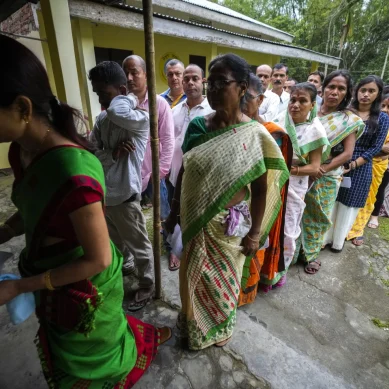
In the mid-1990s, psychiatrist Harvey Max Chochinov and his colleagues were researching depression and anxiety in patients approaching the end of their lives when they became curious about this question: Why do some dying people wish for death and contemplate suicide while others, burdened with similar symptoms, experience serenity and a will to live right up to their last days?
Over the next decade, Chochinov’s team at the University of Manitoba in Canada developed a therapy designed to reduce depression, desire for death and suicidal thoughts at the end of life. Dignity therapy, as it is called, involves a guided conversation with a trained therapist to allow dying people to speak about the things that matter most to them.
“It is a conversation that we invite people into, to allow them to say the things they would want said before they are no longer in a position to be able to say it themselves,” Chochinov says.
Dignity therapy is little known to the general public but it has captivated end-of-life researchers around the world. Studies have yet to pin down exactly what benefits it confers, but research keeps confirming one thing: Patients, families and clinicians love it.
These end-of-life conversations are important, says Deborah Carr, a sociologist at Boston University who studies well-being in the last stages of life and explored the topic in the 2019 Annual Review of Sociology.
A key need of people who know they are dying is tending to relationships with people who are important to them. This includes “being able to communicate their wishes to family and ensuring that their loved ones are able to say goodbye without regret,” she says.
And the closer we get to death, the more we need to understand what our lives have amounted to, says Kenneth J. Doka, senior vice president for grief programmes for Hospice Foundation of America.
“As people reach the end of life, they want to look back and say, ‘My life counted. My life mattered. My life had value, had some importance,’ in whatever way they define it,” Doka says. “I think dignity therapy speaks to that need to find meaning in life and does it in a very structured and very successful way.”
Chochinov’s search to understand why some people feel despair at the end of life while others do not led him to countries like Belgium, the Netherlands and Luxembourg, where euthanasia and assisted suicide have long been legal. There he learned that the most common reason people gave for seeking assisted suicide was loss of dignity.
To learn more, Chochinov and his colleagues asked 213 terminal cancer patients to rate their sense of dignity on a seven-point scale. Nearly half reported a loss of dignity to some degree, and 7.5 per cent identified loss of dignity as a significant concern. Patients in this latter group were much more likely to report pain, desire for death, anxiety and depression than those who reported little or no loss of dignity.
Dignity at the end of life means different things to different people, but in interviews with 50 terminally ill patients, Chochinov and his colleagues found that one of the most common answers related to a dying person’s perception of how they were seen by others.
“Dignity is about being deserving of honor, respect or esteem,” Chochinov says. “Patients who felt a lost sense of dignity oftentimes perceived that others didn’t see them as somebody who had a continued sense of worth.”
Dignity therapy is tailored to enhance this sense of worth. In a session, a therapist — typically a clinician or social worker – carefully leads the patient through a series of nine questions that help a person express how their life has been worthwhile.
“It’s not like a recipe, that you can just read out these nine questions and then call it dignity therapy,” Chochinov says. “We train therapists so that we can help them guide people through a very organic kind of conversation.”
The session typically lasts around an hour. About half is spent gathering biographical highlights, and the other half focuses on what Chochinov calls the “more wisdom-laden” thoughts that the patient wants to share. A few days later, the patient receives an edited draft for review. “There’s an ethos of immediacy — your words matter, you matter,” he says. “They can edit it and they can sign off on it to say, ‘That is what I want as part of my legacy.’”
A numbered list of questions asked during therapy. The accompanying illustration shows a young person and an old one seated next to one another dignity, talking and looking at a piece of paper.
Dignity therapy uses this standard set of nine questions as a starting point for discussion. The questions invite the dying person to evaluate their life and offer their wisdom to family and friends.
Miguel Julião, a physician in Lisbon, Portugal, specializes in helping patients who have difficult symptoms, which is why he was asked one day a few years ago to see a patient suffering with unbearable pain.
“The minute I got into his room, he told me ‘I would like you to help me die soon,’” Julião says. “I told him, ‘I don’t agree with euthanasia and I don’t do it, but I would like to know about you as a person and what you are most proud of in your life.’”
In the next few minutes, Julião learned about the man’s pride in raising “two good human beings” and stories of their life as a family. And he received an invitation to return for more conversations, which continued until the man died a month later.
The encounter prompted Julião, who was pursuing his doctorate at the time, to pivot his research and focus squarely on dignity therapy. He has had lots of company. Chochinov estimates that nearly 100 peer-reviewed research papers, and at least four in-depth analyses – “systematic reviews” of the accumulated science – have been published so far, and more studies are ongoing.
- A Knowable Magazine report











